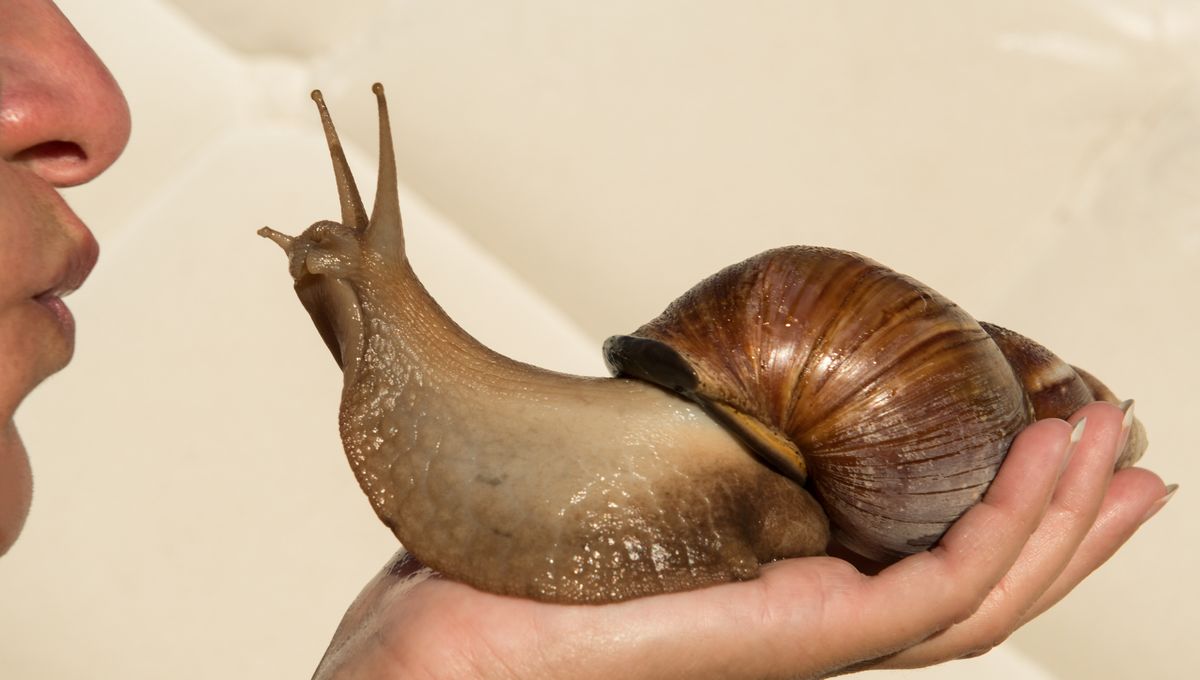
We know the question that keeps you awake at night: when did humans start eating snails? Well, researchers have recently discovered the earliest evidence of prehistoric people cooking and eating these terrestrial mollusks. But while you might imagine a rustic version of modern escargot, the snails in question were actually enormous in comparison.
A team of researchers from the University of Witwatersrand in Johannesburg, South Africa, have found shell fragments of land snails from the Achatinidae family – which can grow to 16 centimeters (6.3 inches) long – at Border Cave, located on a cliff near South Africa’s border with Eswatini. The site has been excavated on multiple occasions since the 1930s, but it was during work conducted between 2015 and 2019 that the shell fragments of giant land snails were found.
The shell bits, recovered in relative abundance, appeared in multiple layers of sediment dating from 70,000 to 170,000 years ago. They also come in a range of colors, “from lustrous beige to brown and matt grey”, the authors write, which occurs when the shell is heated.
According to the team, invertebrate animals, such as snails, make up more than 95 percent of Earth’s biodiversity, but they are often overlooked in archaeological research. This is because they are seen as largely unimportant for our understanding of the history of human behavior. This marginalism is made worse by how small most specimens are, which means they have less chance of surviving in the archaeological record. But snails can be a useful exception due to their shells.
Land snails can appear in excavation sites because they naturally occur in the area, where they bury themselves in the soil to avoid dehydration, or because they were introduced through human agency – for eating or to use their shells for different purposes (for jewelry or religious practices). Other research has shown that snail consumption appears in dig sites dated to about 30,000 years ago in Europe and around 40,000 years ago in Africa. This represents a “huge gap” for the study’s findings, study author Marine Wojcieszak told New Scientist.
“Terrestrial molluscs are an excellent source of nutrients” the authors write, “they are easy and not dangerous to collect, they can be stored for some time before being consumed, they are simple to prepare and to digest as long as one has a basic mastery of fire”. Given that hominins have been using fire for at least 400,000 years, it is easy to see how the latest finds fall within the realm of possibility. In fact, there is evidence that we were baking fish over 780,000 years ago.
To test their hypothesis that the snails were on site due to human consumption, the team took shells from modern land snails and broke them into fragments. The fragments were of different sizes and colors and were experimentally heated for periods of time between 5 minutes to 36 hours. This provided a valuable source to compare with their prehistoric counterparts.
Exposure to higher temperatures and longer periods of heating turned previously white fragments into a more “snow white” shade, while beige and brown samples turned white and grey. The heating process also removed the shells’ gloss because the organic matter responsible for this sheen in the shells’ structure was burnt out.
The shells also showed extreme signs of micro-cracking, which is caused by heating. The same patterns were present on the prehistoric shells found at the site in South Africa.
“Microscopic analysis of the modern heated shells and archaeological specimens from Border Cave shows that they share features resulting from exposure to heat, namely micro-cracking and a matt surface appearance,” the authors state.
“This finding, and the fact that most of the archaeological specimens derive from combustion features demonstrates that these shell fragments were most likely heated.”
Although the possibility that the shells appeared at the site through natural behavior – such as the snails burrowing into the soil where they were accidentally heated by a fire – cannot be ruled out, human agency does seem to be the most likely cause. This idea is strengthened by the remains of other potential food items, such as seeds and bones, which were found nearby, Wojcieszak told New Scientist. Plus, the cave itself is too isolated for the food leftovers to have appeared on their own.
The results don’t just tell us about our ancestors’ eating habits, they also allow us a “glimpse into the potentially complex social life of early Homo sapiens”, the authors conclude.
The study is published in Quaternary Science Reviews.
Source Link: Ancient Humans Cooked And Ate Giant Land Snails Around 170,000 Years Ago